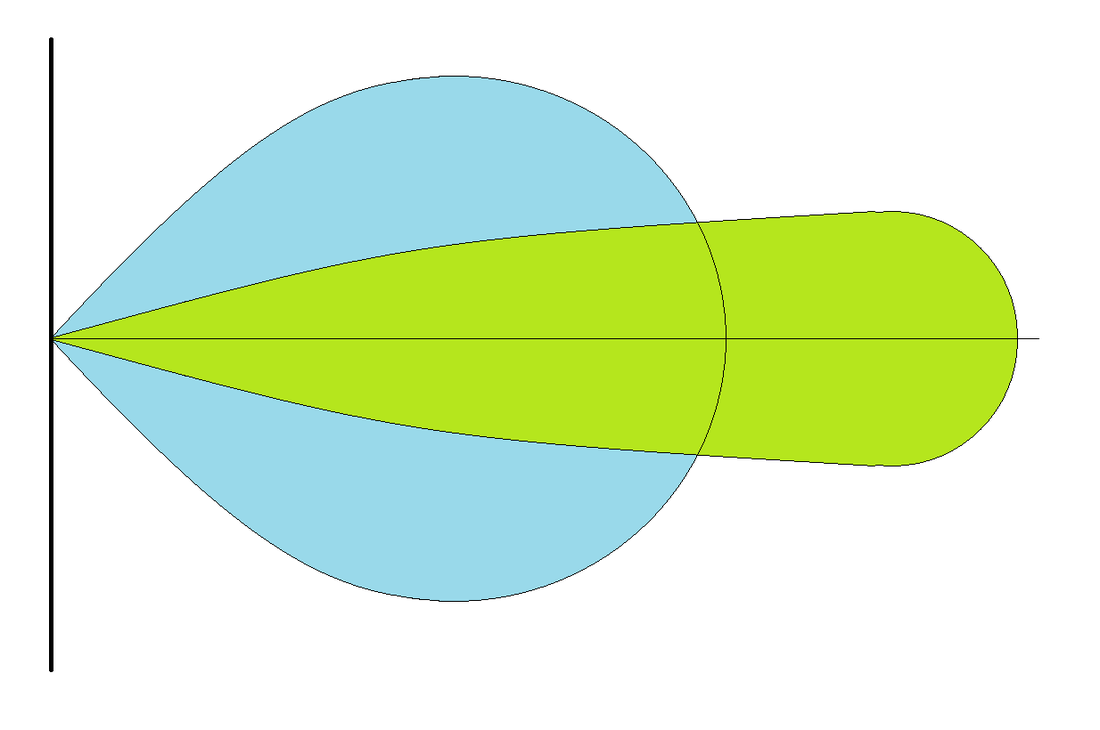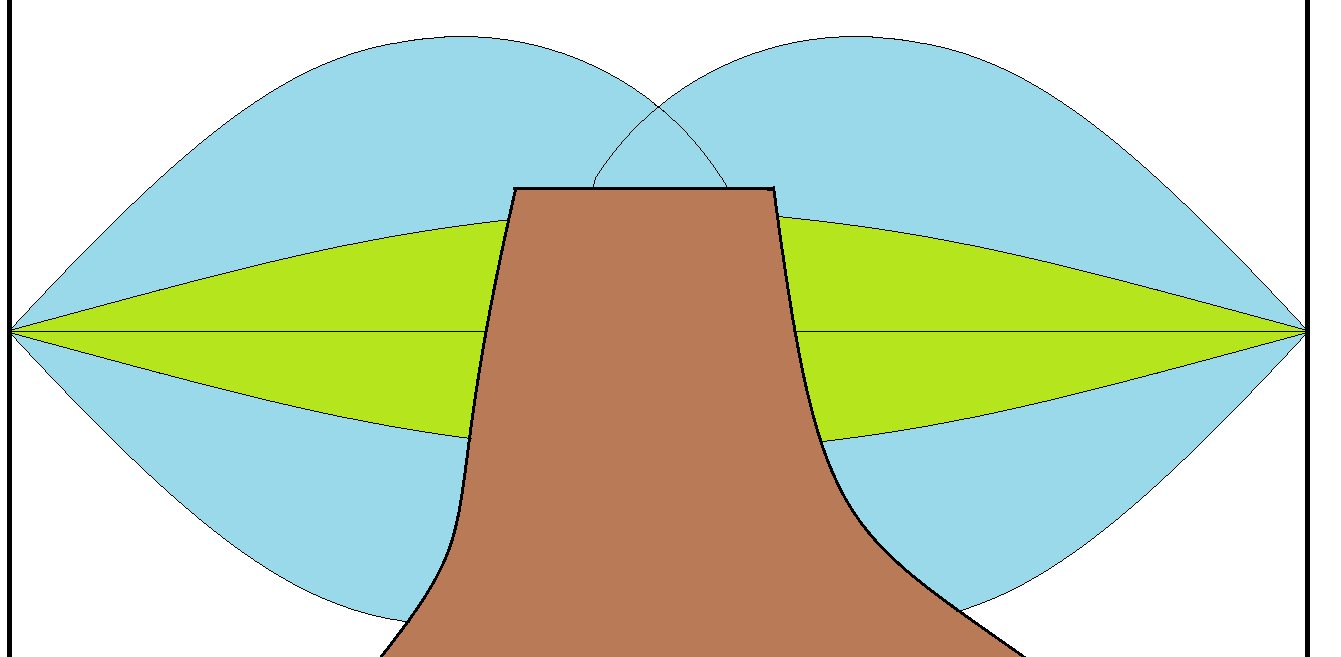|
Now, for an unprecedented second posting in a month, mostly because I think there was already too much information crammed into the Marine VHF post and this is so closely related to it. If you haven’t already, scroll down and read the Marine VHF post just before this one. There’s a lot of technical stuff about electromagnetism and such that goes into antenna performance. However, the two main determining factors in range are antenna height (it is pretty much a line of sight system, but you can often get transmissions over and around features since an antenna "sees" differently than the human eye) and the transmit power. Marine VHF is limited to 25-Watts of transmit power, but some channels with special uses are limited to 5-Watts (like VHF Channel 13, intended for maneuvering communication from bridge-to-bridge on larger ships, since ships communicating on it should by definition be in visual sight of one another). Most fixed mount Marine VHF radios will be capable of transmitting at 25-Watts, but handheld radios probably have a maximum transmit power of 3-Watts on all channels. So, aside from portable verses fixed mount, there’s not much difference in range based on transmit power between radios and focus then goes to making sure your antenna is as high as possible to improve its line of “sight.” Of course there are other factors to consider, which brings us to the third factor in antenna performance, antenna length. Many will tell you that the longer an antenna the better the reception, but I don’t really see this component factoring into maximum range nearly as much as power and antenna height; it does have an effect though. Antenna length is a factor of wavelength (Marine VHF operates in the range between 156.025Mhz to 157.425Mhz and is often referred to as the 2-meter band, since that's roughly the average wavelength in that band), and VHF antennas are usually 1/4, 1/2, or 5/8 of that wavelength. The longer the antenna the better the range, at least theoretically, but that’s not the whole story. You’re likely to find 3-ft, 4-ft, and 8-ft antennas; so, the question you’re probably asking is, why not just go with the 8-ft for the best range? All other things being equal, the difference between a 3-ft antenna and an 8-ft antenna is the transmit and receive pattern (i.e. how the antenna "sees"). This is often referenced as dB of gain; the higher the number the better the range of the antenna, but I don’t think that accurately depicts what is going on. You can picture the transmit/receive pattern extending out from the center of the antenna and rotated around the antenna in a uniform toroid or "donut" like shape. If you view a cross-section of the transmit/receive pattern, you would see what I would refer to as a lobe (my background is more in acoustics for sonars and my terminology may not always be accurate, but it translates to electromagnetic transmissions as well). As you make the antenna longer, the transmit/receive pattern will become narrower and more focused; in effect you are putting more power into a narrower area, producing longer range, like the beam of a spot light as opposed to a flood light. The lobe of a shorter antenna would be more diffuse and broader with a shorter maximum range (like a flood light), while a longer antenna would have a narrower pattern with greater overall range (like a spot light). Please excuse my rudimentary Paint diagram, but the blue lobe depicts that of a 3-ft antenna and the green lobe depicts that of an 8-ft antenna. The increased range with the more focused pattern is great, but it can present an issue on Lake Powell and actually adversely affect the range. Diffuse patterns like the 3-ft antenna can overlap and "see" over obstructions, like canyon walls; the narrower pattern of the longer antenna may not "see" over the obstruction. The area inside that lobe is not only the area that the antenna can transmit its signal, but it is also the only area where it will detect another transmitted signals. Your antenna doesn’t have to “see” the other antenna to communicate with it, their transmit/receive lobes just have to overlap. Again, please excuse the crude Paint illustration. The other issue with longer antennas are that on smaller boats that pitch and roll a lot, the lobe will move up and down and not point perfectly horizontal, which can mean that you do not get steady reception with other stations. A shorter antenna's broader lobe isn't as critical to keep level since its wider pattern covers the area even when the boat is heeled or pitching. Also, 8-ft antennas are more prone to damage and can be difficult to mount on a smaller boat. On a houseboat, an 8-ft antenna is feasible, but on a smaller boat I would opt for a shorter 4-ft antenna or even the 3-ft antenna.
Additionally, it’s important to note that the physical length of an antenna may not be the antenna length. For example, the 8-ft fiberglass antenna you buy might actually house two 4-ft antennas stacked atop one another. This is done to get benefits of what I would refer to as beam forming to improve performance of the antenna, but I'm not sure I fully grasp how they are "beam forming" and I'm feeling too lazy to do the research on it right now (could show up in a future blog post). The point I'm trying to make is that the 8-ft antenna probably won't have a very noticeable difference in performance over the 3-ft antenna. I would even venture to say that the 3-ft antenna might give you better range since the lobes are wider and should allow you to transmit over obstructions. I’m not advocating getting the cheapest antenna you can source, you still want to get a good quality antenna, I’m just saying that length shouldn’t be a driving factor in performance. It’s more important to find an antenna that fits your application well; the benefits of an antenna that is too tall to get into your covered slip won’t outweigh the likelihood of knocking that antenna off when you forget to lower it before docking. Until next time, here’s wishing you fair winds and following seas.
0 Comments
Leave a Reply. |
AuthorBrent Pounds has over a decade of experience in the maritime industry and has been involved in recreations boating since he was a child. See the About section for more detailed information. Archives
October 2016
Categories
All
|


 RSS Feed
RSS Feed